Mark Sisson's Blog, page 373
August 24, 2012
I Have a New Lease on Life
It’s Friday, everyone! And that means another Primal Blueprint Real Life Story from a Mark’s Daily Apple reader. If you have your own success story and would like to share it with me and the Mark’s Daily Apple community please contact me here. I’ll continue to publish these each Friday as long as they keep coming in. Thank you for reading!
 It was November 9th, 2009. I remember that day vividly because it was the day I reached my breaking point. I was 28 years old and I broke down into tears and decided “enough was enough”. The words that come to mind when I think of that day is the quote from the movie “Animal House” when Dean Wormer says to John Belushi’s character: “Fat, drunk, and stupid is no way to go through life”.
It was November 9th, 2009. I remember that day vividly because it was the day I reached my breaking point. I was 28 years old and I broke down into tears and decided “enough was enough”. The words that come to mind when I think of that day is the quote from the movie “Animal House” when Dean Wormer says to John Belushi’s character: “Fat, drunk, and stupid is no way to go through life”.
Let me give you a little background. I was always active in high school and college. I played high school football and tennis, and continued my tennis career into college. While that kept me fairly active, my diet and partying ways always kept me on the larger side. After college, I got married to a wonderful, beautiful woman. However my inactive lifestyle and partying ways continued. We had our first child in September of 2008. As our daughter became more active, I simply did not have the energy to play with her. My greatest fear was not living long enough to walk her down the isle. I did not want my daughter growing up without a father. And it broke my heart.
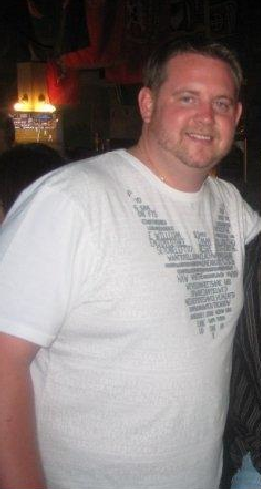
You see, shortly before I made the decision to go Primal and begin an active lifestyle, I had ballooned to 291 lbs. I was having serious panic attacks and living in a constant state of anxiety. I had been to every kind of doctor imaginable. Cardiologists, chiropractors, family MD’s, and naturopath doctors. I had received two stress tests and visited the emergency room twice because I swore I was dying. They could never find anything wrong. I just thought that that was how I would have to live whatever life I had left. Miserable, fat, inactive, and basically a useless blob taking up space in the house. I was a terrible husband and father. My doctor threatened to put me on cholesterol meds and BP pills. I was diagnosed with sleep apnea and forced to sleep with a C-PAP machine. There I was, 28 years old, sleeping with a C-PAP machine.
My wife had already started eating more Primal and was very active. She actually is now the owner of Barefoot Fitness in Watertown, SD. She has been a great mentor of mine as I have made this transformation. I started slowly. At first I cleaned up my diet. I dropped 50 pounds in about a year with a Primal Blueprint diet alone. But then my progress stalled out. I was feeling better but still didn’t think I felt good enough to workout.
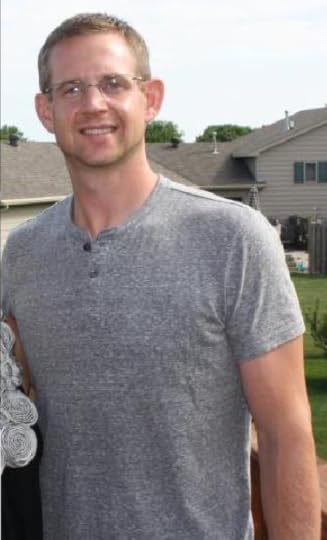
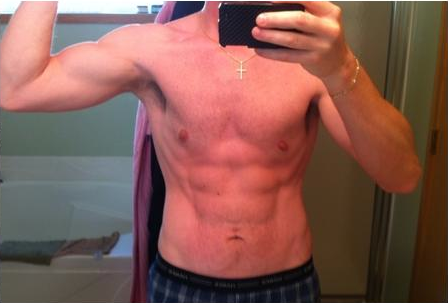
On my 30th birthday, I decided that my 30’s were going to be the best decade of my life. I got up, hit the gym, and have never stopped. I train primarily with kettlebells and bodyweight exercises. That was almost two years ago. I have been very strict with my Primal Blueprint diet now. As a result, I have lost 110 lbs and currently weigh 180 pounds. My cholesterol numbers are that of a very healthy person.

I no longer use my C-PAP machine, and I feel like a teenager again. All of my health issues are gone! I feel like I have a new lease on life. I look forward to every morning and cherish every day. Because honestly, when I was at my worst I didn’t know how many days I had left. We now have a second child, and I am able to play with them as much as I want, roll on the floor with them, and just be there for them. I truly have a life I never thought possible. I went from feeling like I was dying every minute of every day, to living the life I have always dreamed! It is truly a gift that I cherish every day.
Brent
Grab The Primal Blueprint Cookbook Today and Receive Free S&H and a Free Primal Blueprint Poster

August 23, 2012
IE: The Power of Intermittent Euphoria
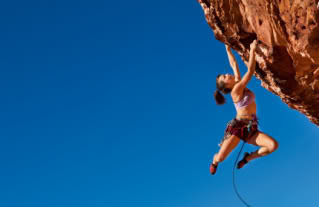 A couple of weeks ago I wrote about slow living, the philosophy that encourages us to reclaim our time and consciously approach the way we live. Slow living isn’t as much about pace as it is depth of experience – absorbing the full dimension of each moment and relationship. In slow living and other conscious living philosophies, we’re called to re-sensitize ourselves to life. We notice more, feel more, and perhaps come to know ourselves more. We leave behind an existence led on autopilot. We let go of routinization that can reduce life to a manic drill. There’s another level to this picture, I think. Even in a peaceful, productive, and well-balanced life, we can find ourselves feeling restless. The comfortable plateau we’ve achieved – with all good intention – can seem less satisfying. Where did the peaks of life go? Do we make space for exuberance or adventure anymore? In seeking to live vitally, we inherently value more than the necessities of survival, more than the elements of comfort. It’s a mark of thriving, I think, to test the scale and dimension of existence – in whatever way fulfills us personally. We can choose to prioritize the role awe, adventure, and uncertainty in our lives. The fact is, the power of intermittent euphoria (IE) can fill a deep – and deeply human – well.
A couple of weeks ago I wrote about slow living, the philosophy that encourages us to reclaim our time and consciously approach the way we live. Slow living isn’t as much about pace as it is depth of experience – absorbing the full dimension of each moment and relationship. In slow living and other conscious living philosophies, we’re called to re-sensitize ourselves to life. We notice more, feel more, and perhaps come to know ourselves more. We leave behind an existence led on autopilot. We let go of routinization that can reduce life to a manic drill. There’s another level to this picture, I think. Even in a peaceful, productive, and well-balanced life, we can find ourselves feeling restless. The comfortable plateau we’ve achieved – with all good intention – can seem less satisfying. Where did the peaks of life go? Do we make space for exuberance or adventure anymore? In seeking to live vitally, we inherently value more than the necessities of survival, more than the elements of comfort. It’s a mark of thriving, I think, to test the scale and dimension of existence – in whatever way fulfills us personally. We can choose to prioritize the role awe, adventure, and uncertainty in our lives. The fact is, the power of intermittent euphoria (IE) can fill a deep – and deeply human – well.
IE. It likely makes you think of IF. That’s no mistake. Intermittent fasting, of course, is the occasional abstinence from food that allows the body to upregulate key metabolic and immunity related processes. It’s a kind of “reset” button for the body. The pattern parallels the likely conditions of our evolution. Our ancestors inevitably lived with a measure of uncertainty and periodic deprivation. If the body went into a immediate state of shock at the first sign of privation, our forebears wouldn’t have had much of a chance to survive. Instead of shutting down, the body instead uses the opportunity to shift itself toward increased physiological sensitization. On a more psychological level, I think IE does something similar. With life’s necessary obligations, schedules, and routines comes a certain emotional desensitization over time. We diligently maintain, but in doing so eventually give up some of the texture of feeling. In “slow” living, we can bring consciousness to each moment, but how about making space for experiences that allow us to step out of consciousness into something bigger, more imposing, more stirring?
The famous psychologist Abraham Maslow called these moments “peak experiences.” Writer Diane Ackerman labels them “deep play.” Whatever the name, they’re experiences that take us beyond enjoyment, beyond flow into more formidable physical and emotional territory. They bring us to extreme levels of risk or exertion, creativity or collective belonging. In form, they can range dramatically (e.g. observing the aurora borealis, climbing a taller and more challenging mountain, surfing an immense wave, spending time in a vastly different culture, creating music or art in an awe-inspiring landscape, witnessing a massive animal migration, volunteering in a natural disaster area, or scaling the side of a rocky cliff). In purpose, they challenge and move us in staggering ways. In effect, they change us. They reset us emotionally. We go forward with a different vision of ourselves, our abilities, or the world around us. We feel emboldened, enlarged, connected in a way we didn’t before.
In a survey taken a few years ago in the United Kingdom, some 85% of kids between the ages of 6-12 said they craved more adventure in their lives. Their longing can remind us of our own. True, there is something to the heady, hyperaware exhilaration of childhood. Yet, how often do we suspend our own yearning for excitement? Beyond the artificial drama that can fill our time, euphoric experiences are sources of stimulation that genuinely feed the spirit. We’re right to crave them. Paul Pearsall, author of AWE: The Delights and Dangers of Our Eleventh Emotion, suggests awe has the power to enhance both our physical and mental health. Witnessing or pursuing something that brings us to the edge of our own experience can awaken us. “Awe is the basic human emotion,” Pearsall explains, “that lifts us far above languishing, not because it makes us feel good, but because it makes us feel.” Through risk or awe, IE is ultimately about experiencing the core of life as the grand and precarious force it is.
From an evolutionary perspective, IE dovetails with the uncertain existence of our ancestors. They lived with threat the way few of us do today. Though their days were hardly one continual bout of human to beast combat, they engaged with danger on a frequent, albeit intermittent, basis. Evolution rewarded a measure of risk-taking, which motivated everything from big game hunting to global migration. A transcendental sense of connection and awe would’ve bound people together in powerful ways. Euphoric awe and exhilaration could’ve worked, as University of Michigan professor of psychology Barbara Fredrickson explains, as “‘broaden and build’” forces that expanded our ancestors’ thinking and “behavioral flexibility.” Translate this to today, and we first acknowledge we’re lucky to have to seek out risk. Nonetheless, we’re wired to handle it. On some level, our human brains still expect the unexpected. The pursuit of IE, however, doesn’t mean being foolhardy or putting ourselves in worthless danger. Euphoria comes from more than risk. Grappling with or encountering a force larger than ourselves, we learn respect. We gain an educating, stabilizing, even comforting sense of humility.
As research has shown, we measurably benefit from IE related pursuits. Beside the physical exercise inherent to many IE activities, there’s the uniquely rewarding adrenaline rush to be had in so-called “extreme sports” as well as other activities that vigorously test more emotional and creative capacities. Yet, the draw is more than the adrenaline cascade. It’s often the discipline, the challenge to one’s self, the connection with nature and perhaps with others. Adventure therapy, for example, is recognized as an effective treatment for everything from weight control (PDF) to addiction, behavioral issues to past abuse.Participants develop their coping mechanisms for stress as well as their self-esteem and interpersonal trust.
In terms of euphoric awe, Pearsall explains the neurological and hormonal shifts associated with awe have been shown to boost immune response, lower cortisol levels, and decrease the duration of adverse cardiovascular responses to negative feelings. In studies (PDF) conducted by researchers from Stanford and the University of Minnesota, subjects who experienced awe during the experiments showed more patience and less materialism. They literally felt they possessed more time and were more motivated to help others with their time. Feelings of awe, the researchers suggest, enhance our experience of the present and even alters or slows our perception of time itself.
Then there the effects euphoric experiences can have on the big picture of our lives. IE has the power to psychologically fortify us. As research confirms, it builds our personal resilience. We create a reserve of joy, of rejuvenation, of perspective with which to bounce back from adversity. True euphoria doesn’t simply up the ante for future thrills: it sharpens our whole perception and perhaps appreciation of experience. When we let it, IE can sensitize us to the wonders – both joyful and fearsome – in our daily existence. It can also inspire us to offer more energy, creativity, and novelty to our relationships. Having expanded our personal dimensions, we bring more vigor and vitality to life.
It’s true we each gravitate to our own sources and levels of stimulation. Some of us are natural thrill seekers. Others enjoy the rush of a good adventure but don’t require the same risk to come away altered for the experience. Even that, experts explain, comes down to a confluence of environment and genes. It’s part of the complex, hybrid picture of human individuality. As diverse as our novelty drives may be, however, we’re all enhanced by moments of physical, emotional, and cognitive rapture. The challenging pursuits that can fuel IE – whether extreme sports, creative performance, or life altering volunteer work – embody the “optional that isn’t optional” Primal principle. To use Ackerman’s framework, the “deep play” of these experiences harness the power of our species’ plasticity. They keep us growing, invigorated, and youthful.
Within the precarious, the unlikely, the bold pursuits of our lives, we continually expand the sense of our own strength and limits. When we test ourselves, we connect with what is most essential in our humanity. We scale the uncertain heights of existence itself – of physical risk, bodily endurance, emotional depth, creative power, and human connection. Safety is a blessing, but there’s also something to learned from risk. As Diane Ackerman puts it, “Where there is no risk, the emotional terrain is flat and unyielding, and, despite all its dimensions, valleys, pinnacles, and detours, life will seem to have none of its magnificent geography, only a length.” In the context of a lifetime, these realizations and moments of intensity are ours to carry with us. They help expand the proportions of our living and fill a well that sustains the life we go back to.
Thanks for reading today, everybody. I’ll talk more about IE next week, but let me know your thoughts. Have a great week.
Get the Primal Blueprint Fitness eBook, Free Health Tips and Primal Recipes Delivered to Your Inbox

August 22, 2012
PrimalCon 2013 Registration Now Open!
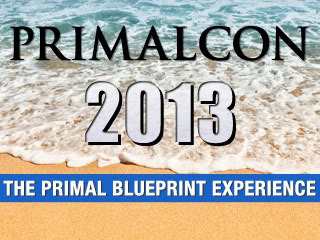 PrimalCon. For three years, you’ve read about it, seen pictures, watched videos – experienced it as much as humanly possible through the Internet. Perhaps 2013 is the year to pull the trigger? That’s right, I’m talking about you joining me and 120 other intrepid folks for PrimalCon 2013, from Thursday, April 11th to Sunday, April 14th, 2013 in Oxnard, CA. That is, if you like eating phenomenal food, experiencing the breathtaking Southern California coast, hanging out with totally cool fellow Primal enthusiasts from around the globe, and learning from some of the world’s most knowledgeable experts on all facets of Primal-related eating, moving, and living.
PrimalCon. For three years, you’ve read about it, seen pictures, watched videos – experienced it as much as humanly possible through the Internet. Perhaps 2013 is the year to pull the trigger? That’s right, I’m talking about you joining me and 120 other intrepid folks for PrimalCon 2013, from Thursday, April 11th to Sunday, April 14th, 2013 in Oxnard, CA. That is, if you like eating phenomenal food, experiencing the breathtaking Southern California coast, hanging out with totally cool fellow Primal enthusiasts from around the globe, and learning from some of the world’s most knowledgeable experts on all facets of Primal-related eating, moving, and living.
In case you haven’t heard (or reviewed the links from 2010, 2011, and 2012), PrimalCon is our three-day health and fitness retreat – a total immersion weekend experience of expert-guided workouts, play, leisure time, lectures and presentations with assorted expert presenters on Primal-related topics, camaraderie with fellow Primal enthusiasts, and extraordinary Primal feasts – an experience that you will never forget for the rest of your life. PrimalCon is more than just great food and a lively and diverse agenda blending lectures. The truly magical element is the gathering of like-minded folks from all over the globe who share a tremendous passion for living Primally.
PrimalCon welcomes participants of all fitness and experience levels. Really, we make it work for everyone! If you’re a hardcore CrossFit Games type, we’ll have stuff to test your mettle (I’m already in serious training for the Ultimate Frisbee battles – watch out Stember, watch out Curley twins!). If you are new to Primal living, relatively unfit, injured, whatever, don’t worry – you will fit right in. Our staff makes a sincere effort to ensure that you receive appropriate guidance and pace yourself appropriately all weekend. We also offer extensive pick-and-choose flexibility on the daily agendas, so you can custom design your ideal experience. Yep, you can repeat K-Star three times if you want, or escape to the beach for a spell – we won’t tell!
The conference fee is $849 ($799 if you register by Sep. 12), which includes a morning Primal Fuel coconut milk smoothie and snack spread, delicious catered Primal lunch and dinner buffets, and a lavish goodie bag of apparel and other Primal gear. You’ll book accommodations directly with a choice of nearby options (oceanfront resort, upscale affordable motel, oceanfront campground, or even renting a beach house with your pals). To ensure an intimate experience and direct engagement with me and expert presenters, slots are limited to the first 125 registrants.
What to Expect from PrimalCon 2013:
Seminars and presentations include general sessions with me and other featured presenters with specialized areas of expertise directly related to the Primal movement.
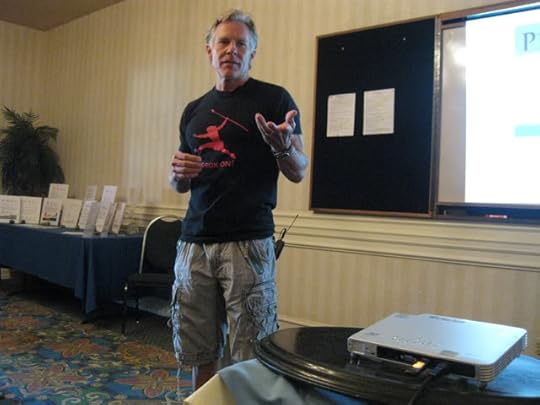
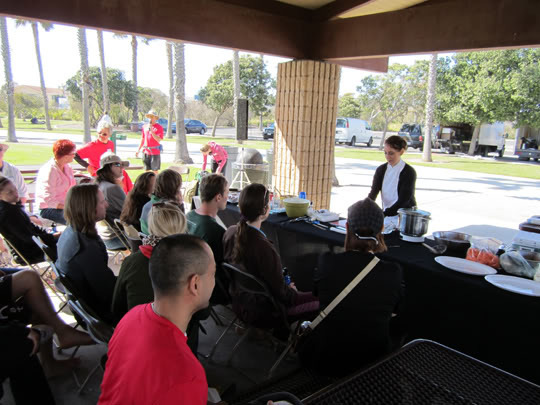
Workouts will take place right on the sand or the expansive grass fields of Oxnard Beach Park. Experts in Primal Blueprint Fitness will guide you in small groups with sessions designed to invigorate you without risking overstress or injury. Again, this conference is for absolutely everyone. Whether you’re in great shape, or you’re injured, relatively unfit, or unfamiliar with the Primal Blueprint, this weekend can kick-start a brand new way of life!
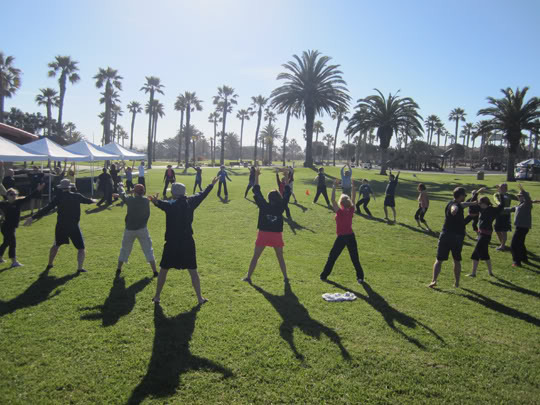
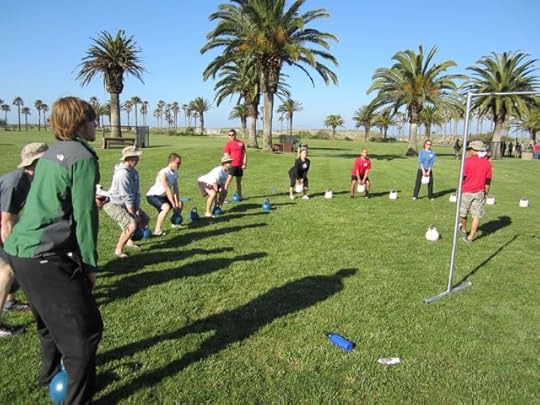
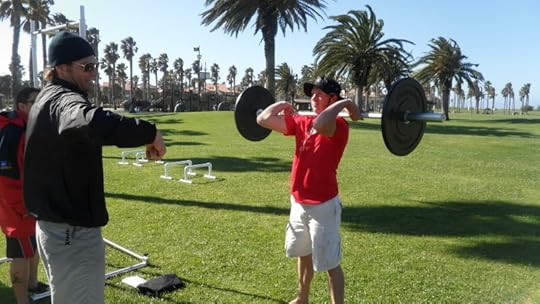
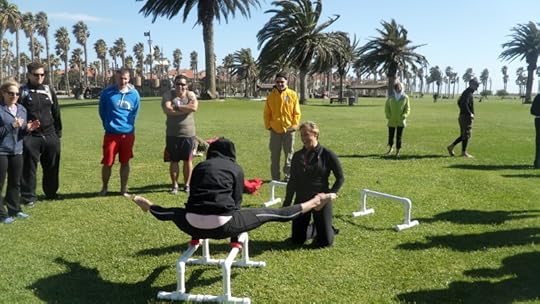
We’ll have all kinds of fun, games, and relaxation, including leisurely hiking on the beach and sand dune preserve, Ultimate Frisbee matches (of course, no good conference should be without), extensive free time for small group engagement with the presenters of your choice (wanna learn to tightrope-walk?), and the top secret Primal Team Survivor Challenge that will test all of your physical, problem-solving, and teamwork abilities.
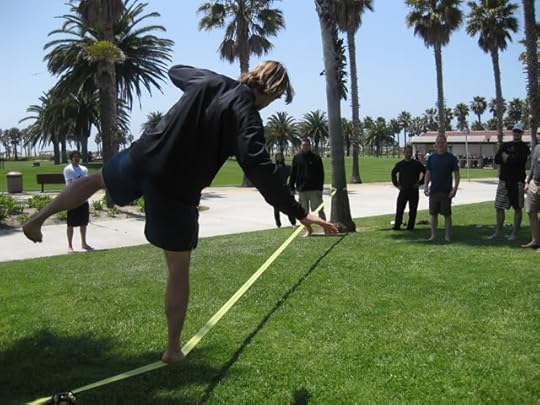

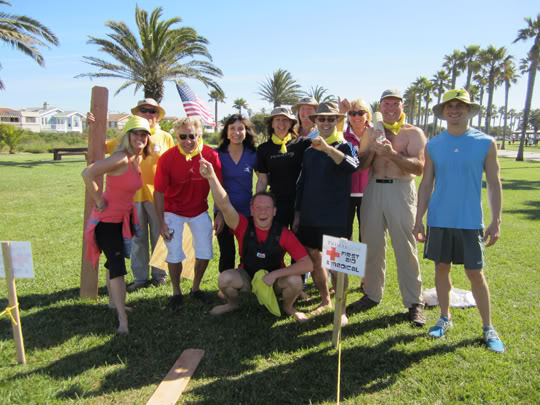

We’ll have lavish Primal feasts featuring ridiculously colorful and enticing lunch and dinner buffets. Enjoy an amazing assortment of fresh-cooked, locally grown, pasture-raised, premium quality Primal offerings. Linger after dinner for social time (can you say, “party house”?) as the sun sets and the fog drifts in to mark the end of the day.
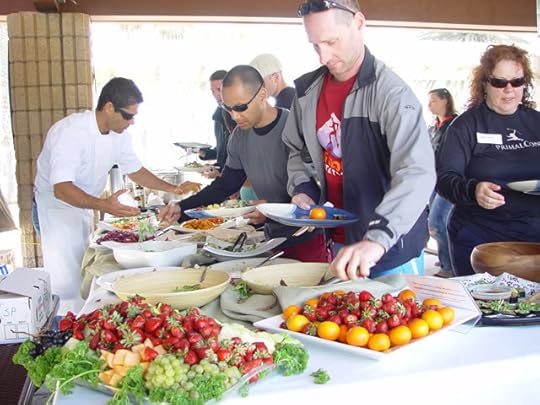

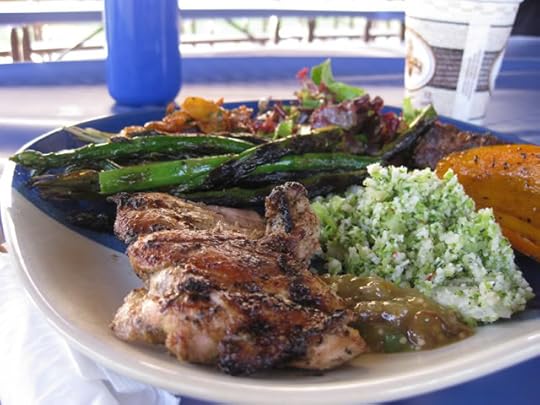
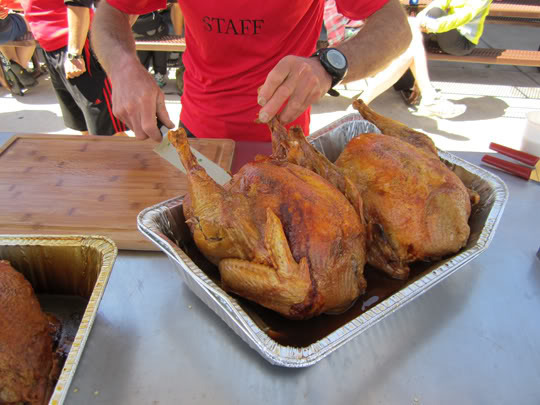
Oh, let’s not forget the now world-famous Primal ocean plunge. (Watch it here.) Don’t worry though, you can get from the water’s edge to the Embassy Suites jacuzzi in about 41 seconds (might even count as a sprint workout)!
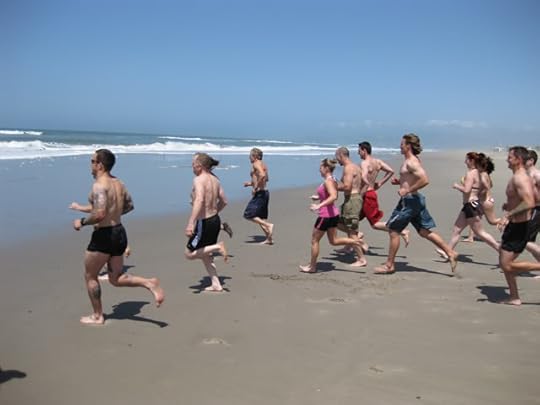
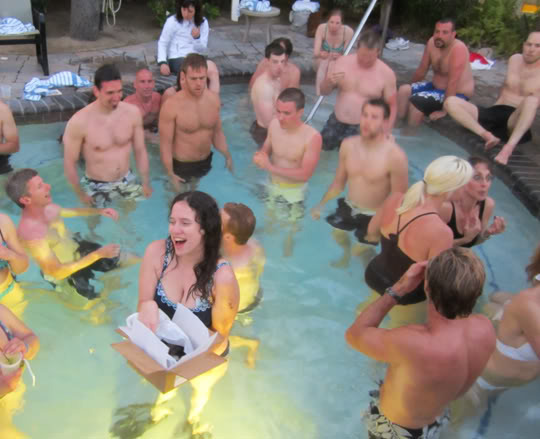
Guest Presenters
In addition to yours truly, we have a stacked presenter list for PrimalCon 2013 featuring numerous leaders in the field and members of the Mark’s Daily Apple community:

Robb Wolf: As one of the leading voices of the Primal/paleo/evolutionary health movement, Robb is a busy guy and a highly sought after speaker across the globe. However, Robb, like you, has been reading the blog, looking at the pics and videos, and pining to attend PrimalCon for a couple of years now. Well, he’s finally going to make it work in 2013. And I must say, if someone as busy as Robb can carve out a few days for fun on the beach, so can you! I’m incredibly stoked to welcome Robb and am sure he will be a huge hit. Regarding his participation, Robb and I decided to just turn him loose and let him do what he does best – riff on any and all matters of Primal living that you can conjure up to ask him.
Robb is the author of the bestselling The Paleo Solution: The Original Human Diet. He publishes a popular blog at RobbWolf.com and hosts a popular weekly Internet podcast called The Paleo Solution together with Greg Everett of Catalyst Athletics. Robb has functioned as a review editor for the Journal of Nutrition and Metabolism, is co-founder of the nutrition and athletic training journal, The Performance Menu, co-owner of NorCal Strength & Conditioning, one of the Men’s Health “top 30 gyms in America” and co-owner of Evolve Foods a paleo food company selling meals and snacks featuring grass fed meat, wild caught fish and all organic ingredients.
Robb is a former California State Powerlifting Champion (565 lb. Squat, 345 lb. Bench, 565 lb. Dead Lift) and a 6-0 amateur kickboxer. He coaches athletes at the highest levels of competition and consults with Olympians and world champions in MMA, motocross, rowing and triathlon. Wolf has provided seminars in nutrition and strength & conditioning to various entities including NASA, Naval Special Warfare, the Canadian Light Infantry and the United States Marine Corps. Robb lives in Reno, Nevada with his wife Nicki and daughter Zoe.
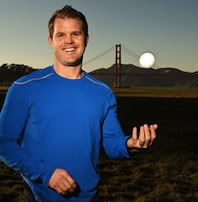
Kelly Starrett is Founder and operator of CrossFit San Francisco. He is an expert on performance-based orthopedic sports medicine, helping athletes prevent and recover from serious injuries with functional rehabilitation exercises. Kelly holds a doctorate in Physical Therapy and has trained numerous Olympic and professional athletes, professional dancers, and military personnel. He has competed at the elite level in whitewater rafting and whitewater kayaking. At his PrimalCon 2012 debut, Kelly absolutely rocked the house with his engaging and extremely informative presentation. I was quite busy dealing with logistics at the event, but when Kelly took the floor I stopped in my tracks and was captivated for 90 minutes. Kelly will be available at presenter free choice time to discuss specific functional problems and injuries of PrimalCon guests.
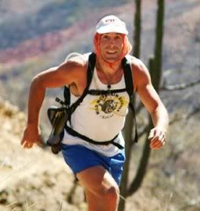
Barefoot Ted is back by popular demand for his fourth consecutive PrimalCon! What a journey Ted’s been on – from the guy getting funny looks aimed at his exposed pedals to now an international celebrity and leading proponent of the exploding barefoot/minimalist shoe movement. Who can forget Ted floating along the Oxnard Beach Park cement path with strides as light as a deer, undaunted by strange looks from passer-by’s and inspired 24/7 by his mission to ”re-discover primal human capacities and encouraging others to do the same.” Ted is an independent athlete committed to re-discovering primal natural human capacities and encouraging others to do the same. He has been featured in numerous articles focused on the benefits of barefoot running. He also has played a major role in popularizing minimalist footwear including Luna Sandals.
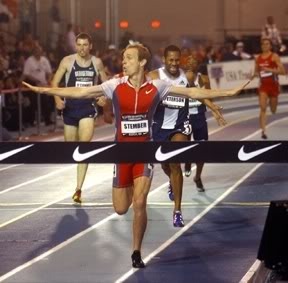
Michael Stember: We are overjoyed to report that Olympic runner Michael Stember will once again join us at PrimalCon. Michael was a former champion middle distance runner who owns Stanford School Records in the 800 meters and 1500 meters and competed for US Olympic team in the 2000 Games in Sydney. He ran on the professional track circuit for a decade and is one of America’s foremost running technicians and theorists about proper technique for running and fitness acuity. Michael’s engaging presentation will appeal to all fitness levels and will teach how to simply move your body properly and efficiently while running at both high speeds and slow speeds.
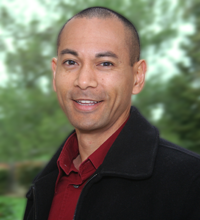
Angelo dela Cruz: Angelo is simply the all-around all-star of PrimalCon. He gets our days off to a great start with his morning sessions of Vitamove (an energizing/focusing mix of tai chi and stretching), and no doubt will be goaded into ending our days in style by busting out some of his break dancing moves at the beach party house! Angelo will engage with groups large and small to dispense his unique wisdom and instruction in the areas of parkour/freerunning, gymnastics, and martial arts. Angelo is also an expert healer and will be available for 1:1 stretching/massage realignment sessions during presenter free time. To get a sense of Angelo, check out his ninja warrior audition tape!
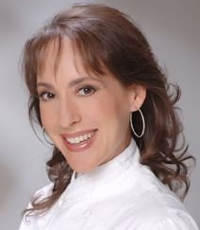
Chef Rachel Albert: Another four-year PrimalCon veteran, Chef Rachel presents the ultimate in fun, time-efficient, Primal-aligned meal and snack preparation with her delightful cooking demo at her private beach house kitchen. Rachel is a dynamo of enthusiasm and expertise from Phoenix, AZ who has been making quite an impact on the Primal/paleo cooking world. You may know her from her book, Garden of Eating. Rachel’s demo and free-time engagements will introduce you to special cooking techniques, and also show you how to make dazzling, eye-catching arrangements that entice everyone – Primal or not – to dig in.
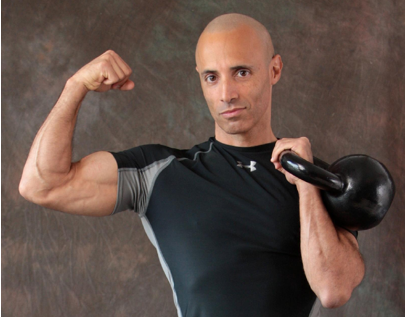
William Vives, kettlebell king, is back! William’s photo was published in the new Webster’s dictionary next to the definition of “high-energy”. William will present his unique and super-creative kettlebell workout throughout the weekend. William’s kettlebell training honors two key principles: attention to quality of movement and keeping it fun! “Quality of Movement” means fine-tuning the training to ensure that all trainees are learning and maintaining good posture, which is the foundation of efficient movement. He stresses injury prevention and patience (“First move better, then get stronger”). William teaches kettlebell training from the “ground up”, allowing trainees to work on understanding how it feels for their body to move right. The trainees flow through the complementary aspects of stability, endurance and dynamic power, while learning how even a relatively light weight (18lbs) can be an easy warm-up – or a challenging test of strength and coordination. William’s session caters to all levels – from beginners who have never held a bell to hard-core enthusiasts looking for innovative new ideas.
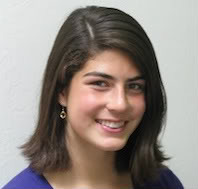
Monisha White: Monisha joins us again to present Esther Gokhale’s posture and movement technique. Monisha was such a huge hit in 2012 she almost, almost makes people forget about her mom—that’s right, it’s Esther! A lifelong (literally!) student of the Gokhale Method, Monisha is an extremely polished and passionate presenter. She was busy all weekend giving her formal presentations and engaging 1:1 with guests to fine tune the way they stand, sit, and move. Oh, did I mention her participation in the Ultimate Frisbee matches? Words simply do not do justice – this girl gets more air time than Michael Jordan! Don’t let the sweet smile fool you, pick her first for your team….she’ll be the one throwing, running, and catching with perfect technique. Oh, did I mention her participation in the Ultimate Frisbee matches? Well, she plays on the Stanford team and gets more air time than Michael Jordan! Don’t let the sweet smile fool you, pick her first for your team.she’ll be the one throwing, running, and catching with perfect technique.
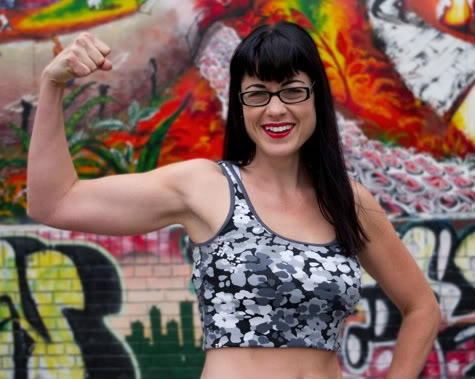
Tara Grant is a featured success story in the Primal Blueprint 21-Day Total Body Transformation. You probably remember her from her Mark’s Daily Apple success story, Tons of Doctors and No Solution. She has transformed from 235 pounds to 159 pounds since going Primal in 2009. Tara suffered a litany of serious health problems related to the Standard American Diet and repeated failures of western medicine to cure her. She’ll share her story in-person of how she took matters into her own hands with a steady, sensible, Primal approach – and what you can do to overcome all the momentum against healthy living that we face today. Watching Tara materialize from the book pages to holding court with the group, detailing her amazing story, was a real treat at 2012 PrimalCon.
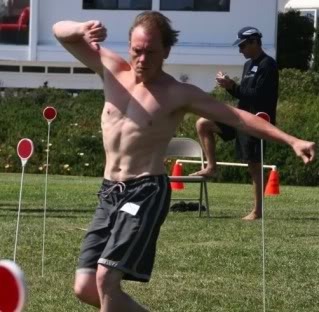
Timothy Williams is a three-time PrimalCon alumni and is also a featured success story in the Primal Blueprint 21-Day Total Body Transformation. Check out his success story on Mark’s Daily Apple if you haven’t already: Complete Recovery Within a Week. During Timothy’s transition to Primal living, he developed a passion for sledgehammer workouts, which he will present at PrimalCon. Yep, sledgehammer workouts, which you will not be able to resist taking a crack at when you meet Timothy and experience his magnetic smile and positive attitude.
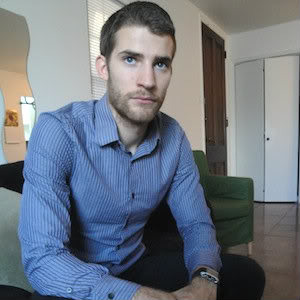
Bryan Barksdale: Bryan returns to PrimalCon for the third time, having been a participant, then a group leader, and now a presenter. Bryan and his wife Tracy founded the very popular and active Austin Primal Living Group which maintains over 500 members. Bryan is currently pursuing an MD/PhD at UTMB/UT Austin in neuroscience and is studying the application of ketosis in the treatment of neurodegenerative diseases. Bryan will discuss how Primal eating and lifestyle practices can optimize brain function and prevent neurodegenerative disease.
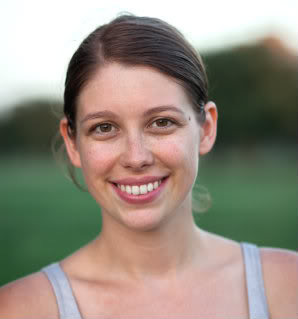
Tracy Barksdale: Tracy was so inspired by the 2012 MovNat presentations at PrimalCon that she went out and completed the intensive certification program, and transitioned from her career as a schoolteacher to present MovNat classes in Austin, TX. Tracy, co-founder of the Austin Primal Living Group with husband Bryan, is part of the Fearless Training Camp, a nationwide training camp for obstacle course racers. Tracy welcomes participants of all levels to this exciting natural movement program. Check out the recent feature story on Tracy and Bryan in the Galveston, TX newspaper.
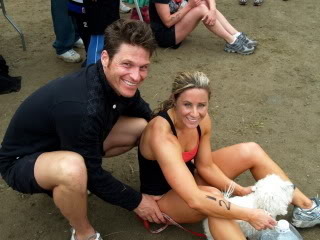
Vanessa and Adam Lambert will be teaching the fundamentals of Olympic lifting and Gymnastics. Vanessa, AKA Nesta Rae, one of Primal Blueprint’s own, has been a gymnast and competitive athlete her entire life (fitness reel). Adam is Battalion Chief and Physical Fitness Coordinator for Cal Fire. The two have been CrossFit games competitors (3rd place Affiliate team 2009), surfers, and avid Primal advocates for years. If you have ever heard of Olympic lifting and have wanted the opportunity to explore this ancient craft of weightlifting, or if you are an avid O-Lifter and just want to throw some weight around, you can join Adam and Vanessa during one of your elective hours to do so! The Lamberts will also be offering an elective that focuses on the fundamentals of gymnastics. Come improve your hand stand technique, learn to do a forward roll, or simply learn some gymnastic-based calisthenics. This is a great opportunity to explore gymnastics and its application to the Primal world.
Seriously, you don’t want to miss this event, so grab your spot today and take what is likely a well-deserved 3-day retreat this coming April. See you there!
Getting Down to Details
Fees: $849 conference registration
Return-attendee discount: $100 discount to 2010, 2011, or 2012 PrimalCon registrants. Type “PrimalConAlum” in the discount coupons field to activate. We’ll confirm your past participation upon receipt of 2013 registration.
Early-bird discount: $50 discount when you register by September 12th, 2012 (as reflected in current shopping cart price).
Couple discount: $50 discount for couples, or pals, registering together – just select quantity “2″ for PrimalCon registration and the second registration will be $50 less.
Cancellations: $100 cancellation fee (remainder refunded) if you cancel before Jan 31st, 2013. $150 fee if you cancel after 1/31/2013.
Schedule: Thursday evening, April 11 – Primal Dinner Feast and social mixer from 6:00pm to 8:00pm. Friday morning, April 12 – registration 7:30am, and then we jump right into the agenda. Well wrap up on Sunday at noon so you can embark on your journey home…and show up to work Monday morning a new person! See below for a more extensive agenda.
Travel: Oxnard is about 60 minutes North of Los Angeles proper (longer at rush hours), and about 30 minutes South of Santa Barbara on gold coast of Ventura County coast. For air travel, Los Angeles International (LAX) and Burbank (BUR) airports are your best choices. Commuter air service is offered at nearby Santa Barbara airport. Residents of Southern California and Bay Area/Northern California are recommended to drive (~6 hours from San Francisco).
The Metrolink train’s Ventura county line will take you quickly from Burbank airport to Oxnard four times per day. Consult the schedule and if you require transportation from the Oxnard station let us know and our staff will accommodate you. The Roadrunner shuttle offers service from both LAX and BUR to your destination in Oxnard. For carpooling or other ride sharing options, consider posting on the PrimalCon Forum.
Lodging:
Embassy Suites Mandalay Beach Resort
All-suite resort facility – walk to PrimalCon activities at adjacent beach park. Step out the back gate and onto the sand! Most upscale and convenient lodging option. Includes delicious complementary breakfast buffet with custom omelet bar. A true resort experience for a surprisingly affordable price. Suites range from $149-$225/nite.
Hampton Inn Channel Islands Harbor
3231 Peninsula Road, Oxnard, CA (805) 985-1100
Phone reservations mention “PrimalCon”.
1.4 miles from beach park. Beautiful facility right on the water in the Channel Islands harbor. Kayak and bike rentals in the harbor. Deluxe continental buffet breakfast with hot items, free Internet and free parking. Top-rated hotel by Yelp and Tripadvisor in Oxnard! Fantastic cloud 9 beds to sleep hard after your big day. Courtyard view starts at $99/nite. Marina view $109/nite. Choices of king, double queen, or King with sleeper. Guaranteed hassle-free experience.
Beach House – Get a group together and rent a beautiful beach house! Assorted options on Mandalay Beach sleep from 8-15 people. Call or email Nadine Wood at Coldwell Banker Oxnard Beach Rentals 805 985 5190 or Nadine.Wood@camoves.com
Click here to sign up for the PrimalCon 2013. Email or call 888-774-6259 if you have further questions.
2013 Daily Agenda (subject to change)
THURSDAY, April 11th
6:00pm-8:00pm: Primal Dinner Feast and informal social mixer. Location: Top secret Primal beach house TBA.
FRIDAY, April 12th
7:30am-8:00am: PrimalCon Registration: Oxnard Beach Park, permanent picnic structure #2.
8:00am-8:45am: Opening Assembly: Oxnard Beach Park. Greetings from Mark, overview of the entire weekend agenda with details about each agenda item. Form groups, introduce group leaders and presenters. Participants divided into 6 groups of ~20: A, B, C, D, E, F. Note: Groups will NOT be tiered by fitness level in 2013. We will pair/group together all participants who request such.
8:45am-12:15pm: Primal Essential Movements (PEM), Sprinting/Running Technique, and Slack Line Experience.
8:45am-9:45am: A, B: Sprinting/Running Technique. C, D: PEM. E, F: Slack Line
10:00am-11:00am: A, B: Slack Line. C, D: Sprinting/Running Technique. E, F: PEM
11:15am-12:15pm: A, B: PEM. C, D: Slack Line. E, F: Sprinting/Running Technique
12:20pm-12:50pm: Primal Lunch Buffet
Break: 10 min.
1:00pm-2:30pm: Keynote address from Mark Sisson: Oxnard Beach Park
2:30pm-3:30pm. Presenter Introductions: Brief presentations from presenters explaining their offerings:
Robb Wolf
Barefoot Ted Experience
Chef Rachel – Primal Cooking Demo
Kelly Starrett – Mobility WOD
Carrie Sisson and Karen Moore – Women’s Round Table
Tara Grant Success Story
William Vives – Kettlebell Demo
Angelo dela Cruz – Vitamove
Timothy Williams – Sledgehammer Demo
Monisha Gokhale – Posture/Movement Technique
Michael Stember – Sprinting/Running Technique
Adam and Vanessa Lambert – Olympic Lifting and Gymnastics
The Curley Brothers – Slackline
3:30pm-4:45pm: Free Choice Presentations
4:45pm-6:15pm: Robb Wolf (A,B,C) or Cooking Demo with Chef Rachel Albert (D, E, F)
Break: 15 min.
6:30pm-8:00pm: Primal Dinner Feast: Oxnard Beach Park. Bust out chocolate afterwards at Beach Park. Get people fired up for the plunge.
8:00pm: Primal Evening Ocean Plunge at Embassy Suites back gate
SATURDAY, April 13th
7:30am-8:00am: VitaMove – energizing gentle movement session with Angelo De La Cruz
8:00am-10:30am: Primal Team Challenge or 90-minute presentation TBA
8:00am-9:15am: A, B, C: Primal Team Challenge – Survivor style teamwork challenge on the beach.
D, E, F: 90-minute presentation TBA
9:15am-10:30am: A, B, C: Exuberant Animal. D, E, F: Primal Team Challenge
Break: 15 min.
10:45am-11:45am: Free Choice Presentations (Ted, Kelly, Carrie&Karen, Tara, Ted, William, Timothy, Monisha, Curley boys, guided beach hike with group leaders)
11:45am-12:15pm: Primal Lunch Buffet
12:15pm-1:15pm: Free Choice Presentations
1:15pm-2:15pm: Free Choice Presentations
Break: 10 min.
2:25pm-3:40pm: Ultimate Frisbee matches (A, B, C) or Free Choice Presentations (D,E,F)
3:40pm-4:55pm: Ultimate Frisbee matches (D, E, F) or Free Choice Presentations (A, B, C)
Break: 5 min.
5:00pm-6:30pm: Cooking Demo with Chef Rachel (A,B,C) or 90-minute presentation TBA (D,E,F)
6:30pm-8:00pm: Primal Dinner Feast: Oxnard Beach Park
8:15pm: Beach Bonfire at Mark Sisson’s crib on Mandalay Beach (1/2 mile from beach park)
SUNDAY, April 14th
8:00am-8:30am: VitaMove – energizing gentle movement session with Angelo De La Cruz
8:30am-10:30am: Free Choice Mini-Breakout Sessions with presenters
Break: 30 min. (checkout of hotel, etc)
11:00am-12:00pm: Q&A with Mark Sisson
12:00pm-12:45pm: Primal Snack Bar and Closing Ceremonies

August 21, 2012
Gender Differences in Fat Metabolism
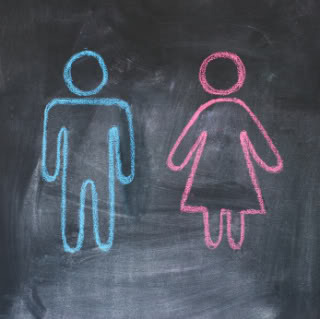 A few months ago, I addressed the role gender plays in how we respond to intermittent fasting. That post sparked a great discussion, and I’ve since received a fair number of emails from readers eager to learn other ways in which gender plays a role in our health and nutrition. One email in particular set me off on a round of research. So, a hat tip to you, Winifred, for giving me something to think, learn, and write about. I hope everyone finds it to be helpful.
A few months ago, I addressed the role gender plays in how we respond to intermittent fasting. That post sparked a great discussion, and I’ve since received a fair number of emails from readers eager to learn other ways in which gender plays a role in our health and nutrition. One email in particular set me off on a round of research. So, a hat tip to you, Winifred, for giving me something to think, learn, and write about. I hope everyone finds it to be helpful.
As you may know, women and men store and metabolize fat differently from each other, and a 2008 paper (PDF) reviewed the evolutionary reasons for these differences. Here’s a summary of their findings and few other noteworthy factoids:
Women carry more fat than men. They are better at storing fat than men. Moreover, when women store fat, they do so in different places than men. They’ll preferentially store fat in in the hips, butt, and legs, whereas when men gain weight, it usually goes to the upper body (hence why you see massive beer bellies atop stick legs). Furthermore, when both men and women store upper body fat, men are more likely to develop visceral fat – the abdominal fat associated with metabolic syndrome – while women are more likely to develop subcutaneous fat.
On women, body fat seems to be healthier and less problematic. The characteristically female lower body “gluteofemoral fat” is actually a strong sign of metabolic health, whereas abdominal fat is not. In men, high body fat levels correlate strongly with insulin resistance, while this relationship is much weaker in women (probably because of their lower tendency to store visceral fat).
Women burn fat differently than men. Upper body fat goes first, while lower body fat tends to stay put. Except during pregnancy and lactation, when the lower body begins to give up lower fat stores far more readily. Interestingly (and not by coincidence), women tend to preferentially store the long chain omega-3 fatty acid DHA – the one that’s so important to the baby’s development during and pregnancy – in their thighs.
Women make more triglycerides than men do, but their serum levels are similar. This indicates that the fat is being taken back up into adipose tissue at a higher rate in women than in men.
Women are better at burning fat in response to exercise. During endurance exercise, they exhibit lower respiratory exchange ratios than men, which indicates more fat burning and less carb burning.
Women are better at converting ALA into DHA, and they also tend to have more DHA and AA circulating throughout their serum than men, who have more saturated and monounsaturated fat.
These differences in fat metabolism aren’t seen in isolated muscle cells of men and women, which isn’t really surprising. We’re made with the same basic building blocks; we just run on different software. The differences are systemic and hormonal.
Why does this sexual dimorphism in fat metabolism exist?
Well, the name of the game in evolution is reproduction, and reproduction is far more nutritionally expensive for women than it is for men. I don’t think I have to spell out why – for a man, the reproductive process is a brief moment in time, a half tablespoon’s worth of effort; for a woman, the reproductive process lasts the better part of a year and represents a significant drain on nutrient stores. As such, women are “designed” to hold onto said nutrients because, as far as evolutionary fitness is concerned, her primary purpose is to feed, nurture, and cultivate an entire other human being inside her body for nine months. Think about that for a second: women have to create and support another life inside their bodies. They have to provide the food, the water, and the shelter. If something goes terribly wrong in the “outside world,” that nutrient flow to the fetus could be interrupted, thus putting her evolutionary purpose at risk.
Now, imagine if the body didn’t know best. Imagine if the expectant mother had to know precisely what the fetus needed at any given moment – what precise nutrients were needed, which foods to eat and when to eat them in order to provide said nutrients, what to drink and how much of it, what not to eat nor drink – and then make a conscious decision to provide those things right on schedule? It wouldn’t work. We wouldn’t be here. Luckily, the body “knows.” The body will draw on what’s stored and what’s provided to make a health baby. And if it’s not all there, it’ll even convert other stuff into the stuff that it actually needs. Sure, a good diet will absolutely improve fetal health, but we’ve all known parents with less-than-ideal diets who have healthy kids. The body knows.
Which is why women store and burn fat differently than men. In order to be able to provide those nutrients to the growing child, female bodies store certain types of fat in certain places on the body. Female bodies “hoard” certain types of fat and are loathe to relinquish them “just cause you had a simple caloric deficit.” Whereas a man could go low carb Primal and lose weight pretty easily because all he “has” to be able to do is provide a bit of sperm, a woman’s body has more important things in mind, like having enough body fat on hand to produce enough leptin for optimal fertility, or enough DHA stored in lower body fat to build a robust baby brain.
How does this affect my recommendations or your diet, if at all?
Women – don’t be concerned about a little (or more than a little) subcutaneous body fat, especially on your lower body. If you’ve been trying in vain to lose that stubborn jiggle on your thigh, consider that maybe, just maybe it’s there for a reason. Even if you’re not interested in having a child, it’s likely that the presence of lower body fat indicates good health. You don’t have to get pregnant, but the ability to do so is probably a marker of good health, and the research outlined above suggests that classically feminine patterns of fat deposition are healthier than classically male patterns. And even if you don’t like your glutofemoral fat, rest assured that the males in your life (even ones as far away as Papua New Guinea – PDF) likely do!
Men – most of the fitness and health literature is geared toward you, so I’ll just suggest that you take this information on gender differences in fat metabolism into consideration.
I’ve always stressed the relativity of a person’s ideal body composition. I’ve discussed my own failings at trying to eat big and lift big to get big. I managed to put on five pounds of muscle by eating and working out way more than was comfortable or natural, but it made me lethargic, and as soon as I skipped a meal or workout, muscle would just peel off. That’s my comfortable body composition. Your ideal body composition might look very different, and, if you’re a woman, it might look very different from a man’s. That’s fine. That’s natural. That’s attractive. That’s how it’s supposed to be, and by trying to fight it – in either direction – your health may suffer.
What do you folks think about all this? Does this take a load off your mind, or does it open up new avenues of inquiry? Let me know in the comment section!
Grab The Primal Blueprint Cookbook Today and Receive Free S&H and a Free Primal Blueprint Poster

August 20, 2012
Dear Mark: What Are the Health Benefits of Negative Ions?
 Anyone who’s been through a health store has heard about ions. If it’s not someone offering samples of ionized water, it’s someone selling ionized bracelets. It sounds wacky, woo-woo, crazy, and as if it belongs firmly in the same realm as crystals, magnet therapy, and cryptozoology (although the kid in me is still holding out hope that both Squatch and Nessie are found), but is there actual science behind this negative ion stuff, or are the people who buy into this stuff totally off their rockers? Today, we venture into what some might consider the realm of the non-scientific to discuss negative ionizers – both the natural kinds (like waterfalls) and the man-made variety (negative ion generators).
Anyone who’s been through a health store has heard about ions. If it’s not someone offering samples of ionized water, it’s someone selling ionized bracelets. It sounds wacky, woo-woo, crazy, and as if it belongs firmly in the same realm as crystals, magnet therapy, and cryptozoology (although the kid in me is still holding out hope that both Squatch and Nessie are found), but is there actual science behind this negative ion stuff, or are the people who buy into this stuff totally off their rockers? Today, we venture into what some might consider the realm of the non-scientific to discuss negative ionizers – both the natural kinds (like waterfalls) and the man-made variety (negative ion generators).
Let’s get to it:
Hi Mark,
I’m almost scared/embarrassed to even ask you about this, but here goes: my friend, who’s into crystals, homeopathy, and other types of alternative health modalities with less than concrete supporting evidence, has been talking my ear off about negative and positive ions. She’s got her entire house decked out with negative ion generators and she’s always trying to “avoid positive ions.” I’ve even seen her ducking past air conditioners. Is there anything to this, or is she crazy?
Thanks,
Beth
Maybe. Let’s take a look.
But first, lest we fall into the trap of talking about abstractions (a la “toxins”), let’s define our terms. What are ions?
Ions are atoms or molecules in which the number of electrons is different than the number of protons. In other words, an ion is a negatively (more electrons than protons) or positively (more protons than electrons) charged atom or molecule. Positively charged ions are called cations, while negatively charged ions are called anions. Because they are either positively or negatively charged, ions are “mobile.”
Negative ions generally appear in natural settings in greater numbers than positive ions. For instance, negative ions are generated by moving water – rivers, waterfalls, crashing waves, even showers and fountains – and the presence of negative ions is actually used to identify potential sources of water on other planetary bodies, like Enceladus and Titan. Waterfalls are probably the greatest producers of negative ions, thanks to the violence with which falling water breaks apart on both hard and aqueous surfaces (PDF). Plants also produce negative ions, especially when exposed to intense light during photosynthesis.
Okay, that’s great and all. Everyone likes waterfalls and all, but does the fact that they generate lots of negative air ions have any bearing on our health?
They can certainly exert “physiological effects” on living things. In fact, that negative and positive air ions could have physiological effects on people was once a field of serious study, but after snake oil salesmen released a slew of air ion generators with the promise that they’d cure cancer, heart disease, and just about every malady under the sun in the 1950s, the reputation of the field was forever tarnished. Research continued, but its name was sullied, and little serious attention was paid to its findings. The result is that anytime anyone even mentions “ions,” they’ll get laughed out of the room or immediately branded a nut job. And that’s a shame, because there is something to this stuff.
Even if some modern skeptics pride themselves on discarding an idea that sounds a little kooky without doing any actual research, that doesn’t mean evidence doesn’t exist. Let’s see what the research says:
Mood
Not everyone with seasonal affective disorder (SAD) can afford to slumber amidst the babbling mist of a nearby brook with the gentle caress of the day’s first sun softly nudging them awake. It’s ideal, but studies indicate that simulating those conditions with negative ion generators, naturalistic dawn simulating lights, and someone blowing raspberries at your face can be just as effective at combating SAD as bright light therapy (okay, maybe not that last one).
Chronic non-seasonal depression has also been shown to be improved with negative ion therapy. High density ion therapy was far more effective than low density ion therapy.
Negative ions (along with bright light and auditory stimuli) reduced subjective measurements of depression, improved mood, and reduced anger in both depressed and non-depressed college students.
Stress
In a study on the salivary responses of people completing a 40-minute word processing task on the computer, exposure to negative air ions reduced the rise in salivary chromogranin A-like immunoreactivity (a marker of stress and anxiety) and improved performance.
Breathing
The trachea is the windpipe, the passage through which air travels into our lungs. Along the trachea are cilia, tiny organelles which keep airborne particles from passing into the lungs. If cilial activity is inhibited, as in cystic fibrosis, more foreign particles are introduced into the lungs. If cilial activity is uninhibited, the junk is kept out of the lungs and discharged later via saliva and mucus. Research shows that negative ion exposure increases cilial activity in the trachea of humans and monkeys, while positive ion exposure inhibits it.
Another study in asthmatic children found that exposure to positively ionized air exacerbated their asthmatic response to exercise.
All told, there does appear to be something to it.
Maybe that’s why sitting around a campfire with your buddies surrounded by towering examples of plant life feels so good. Toss in a nearby river gurgling over stones, throwing mist up in the air? You’ve got a potent recipe for negative air ions. Could that be why camping out in the great outdoors is so rejuvenating and so energizing? Sure, you could argue that camping is just a way for us to get away from the madness of work and city life, get some fresh air and exercise, and reconnect with our Primal selves… but there has to be a physiological mechanism for that. What if negative ions play an important role in that mechanism? What if part of what we’re “getting away from” is the glaring lack of negative ions?
How to Get Exposure to Negative Ions
The best way to get exposure to negative ions is of course going to be the old, natural way. Go to the beach (and play in the water, don’t sit bundled up on the shore). Climb a mountain. Go for a hike. Spend an afternoon reading a great book in a garden, surrounded by plant life. Swim underneath a waterfall. Heck, even just stepping outside the stifling stuffy air of your office, turning off the AC and lowering the car windows, or letting some cross breeze into your house will help.
Take a shower. The closest thing many of us get to moving water is our regular showers. And that’s not so bad. Moving water is moving water, and showers do a good job of producing negative ions in their own right.
Another way is to design a negative ion-generating garden, using running water (preferably a waterfall or fountains) and plenty of green life. This method is a mite more involved than simply buying a generator or visiting natural sites of negative ion generation, but here’s a study in which researchers mapped out the distribution of positive and negative ions across a sample garden (PDF). It should give you an idea for your own garden. The important factor appears to be the presence of running water, since the negative ions were highest right around the waterfall.
For your home or office, I highly recommend a negative ion generator. Many of them aren’t terribly expensive. For, say, 50 bucks you can enrich your stale office in negative ions and filter out impurities to boot. Give it a shot, especially if you don’t spend time in the natural settings where negative ions predominate. If you’re stuck inside all day, bathed in air conditioning, a negative ion generator is worthy of serious consideration.
Or, if you’re handy enough, you could always just make your own ioniser.
Anyway, I’d like to hear about your experiences with negative ionizers (and negative ions in general). Have you noticed anything? Let us know in the comment section!
Get the Primal Blueprint Fitness eBook, Free Health Tips and Primal Recipes Delivered to Your Inbox

August 19, 2012
Weekend Link Love
 Research of the Week
Research of the WeekA Washington state MD calls out for an end to the “war on pubic hair.”
The (sometimes deadly) power of the nocebo effect, revealed. Boy, our minds really are powerful, huh?
Interesting Blog Posts
Chris Masterjohn takes apart the infamous egg-yolk study in his own special fashion.
Lindsay Starke’s impressions of the Ancestral Health Symposium made it onto Boing Boing. Go read it, and weigh in on the comment section.
Media, Schmedia
With the drought ravaging corn crops across the country, some US beef ranchers are turning to an alternate food source that the cows actually love to eat. No, it’s not grass. It’s candy.
Food chemists have supposedly figured out how to replace half the fat in a chocolate bar with tiny droplets of fruit juice without sacrificing texture or mouth feel. Is there anything food chemists won’t try to ruin? CNN reports.
Everything Else
A low-carb, high-fat Paleo dieter just won the Western States 100, an ultramarathon through the Sierra Nevadas.
During AHS12, Dr. Andreas Eenfeldt and I sat down for a chat. Here’s the video.
The Food Lovers (of Make it Paleo fame) have just released a free iPhone and Android app. Browse recipes and generate meal plans, menus, and shopping lists, all for free. There’s really no excuse not to check it out (well, unless you have neither an iPhone nor Android phone, I guess).
Recipe Corner
This has always been one of my favorite ways to prepare cauliflower: with whole cumin seeds.
You’ll probably want to make like an annoying aunt and pinch these cheeks. And by “pinching,” I mean chewing and swallowing them.
Time Capsule
One year ago (Aug 19 – August 25)
Guest Post: Robb Wolf Answers Your Paleo Diet Questions – The one and only stopped by to answer your questions.
Does a High-Fat Diet Cause Type-2 Diabetes? – Okay, so maybe red meat doesn’t cause it, but surely fat does… right? Let’s ask Denise Minger.
Comment of the Week
I hear Popeye knows his Olive Oil
- Hmm. There’s a filthy joke in there somewhere.
Grab The Primal Blueprint Cookbook Today and Receive Free S&H and a Free Primal Blueprint Poster

August 18, 2012
Herb Chicken Cooked Under a Brick
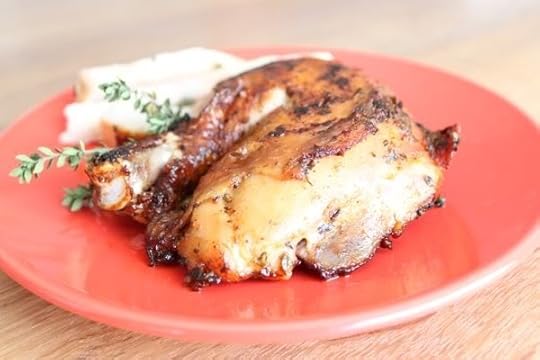 Who would’ve guessed that the secret to the juiciest, most tender chicken breast you’ve ever tasted was a brick? Not a fancy culinary instrument that happens to be called a brick, but an actual brick, the type used to build houses and fireplaces and to landscape yards. A brick set on top of a cooking chicken applies just enough pressure to push the bird against the hot pan, crisping up the skin and cooking all the meat evenly and quickly before it dries out. The bird comes out juicy and tender on the inside, crispy and golden on the outside.
Who would’ve guessed that the secret to the juiciest, most tender chicken breast you’ve ever tasted was a brick? Not a fancy culinary instrument that happens to be called a brick, but an actual brick, the type used to build houses and fireplaces and to landscape yards. A brick set on top of a cooking chicken applies just enough pressure to push the bird against the hot pan, crisping up the skin and cooking all the meat evenly and quickly before it dries out. The bird comes out juicy and tender on the inside, crispy and golden on the outside.
As long as you have a few bricks laying around, the technique couldn’t be easier. First, remove the backbone from the chicken so the bird can be splayed out flat. With a pair of kitchen shears, this is quick work. Next, rub the chicken down with something tasty. In this case, a smoky, herbal rub made from thyme, oregano, garlic and smoked paprika add tons of flavor. You can go this route, or use any of your own favorite rubs or marinades.
Now, it’s time for the bricks to work their magic. Heat an ovenproof skillet on the stove and set the chicken in it, skin side down. Put the bricks on top and leave it alone for 6-8 minutes. Transfer the skillet to a hot oven and leave the chicken alone again, with bricks on top, for 20 minutes or so. Flip the bird, let it cook a little longer, and you’re minutes away from tasting a culinary miracle. The chicken breasts are not only moist, they’re down right succulent. The rest of the bird is amazing too. You might as well make room in your kitchen cupboard now to permanently store two bricks. After trying this recipe, you’ll never want to roast chicken any other way.
Ingredients:
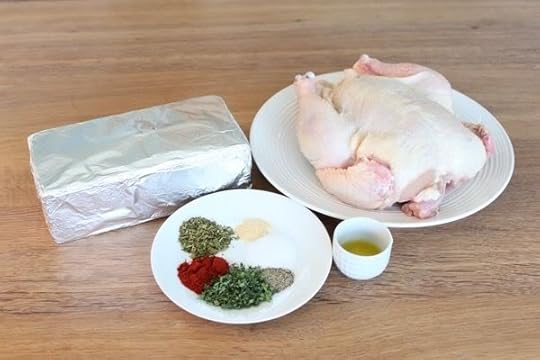
1 whole chicken, 3-4 pounds (approx 1.5 kg)
2 tablespoons oil (30 ml)
1 tablespoon fresh thyme (15 ml)
1 teaspoon dried oregano (5 ml)
1/4 teaspoon garlic powder (approx 1 ml)
1 teaspoon smoked paprika (5 ml)
1/2 teaspoon salt (2.5 ml)
1/4 teaspoon pepper (approx 1 ml)
Tools:
Ovenproof skillet
1-2 bricks, wrapped in foil
Instructions:
In a bowl, mix together 1 tablespoon (15 ml) of the oil with the thyme, oregano, garlic powder, paprika, salt and pepper. Set aside.
Set the chicken on a cutting board breast side down.
Starting at the tail, use a knife or better yet, kitchen shears, to cut all the way down the back, keeping as close to the backbone as you can. Then, cut down the other side of the backbone, splitting the chicken open. Remove the backbone.
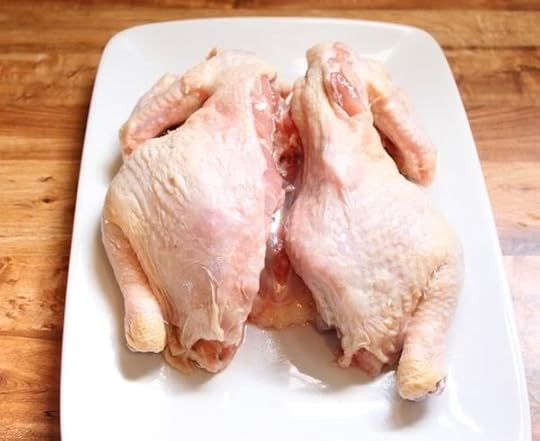
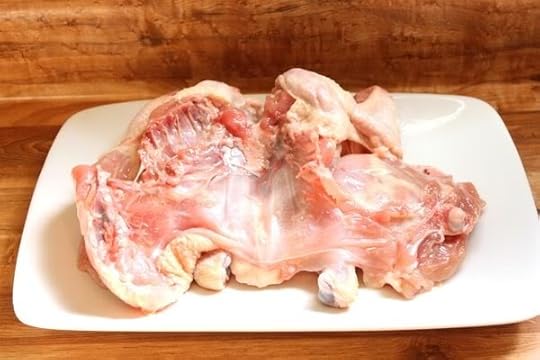
Spread the chicken open, lightly pressing down to flatten it. Rub the spice mixture all over the chicken, getting some under the skin and directly onto the meat.
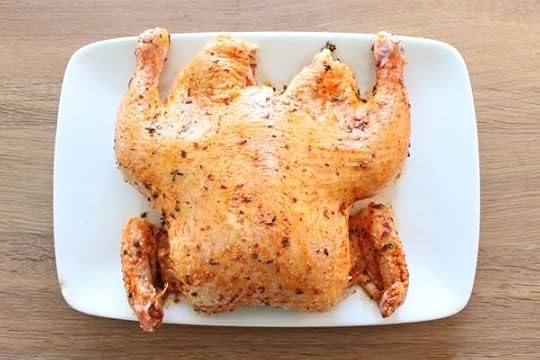
Preheat oven to 400 °F (204 °C)
Heat the remaining tablespoon of oil in a large ovenproof skillet over medium-high heat. When the skillet is really hot, add the chicken skin side down and place the bricks on top to push the bird down against the skillet. You can get away with using one brick if the chicken is small, but larger birds usually need two bricks.
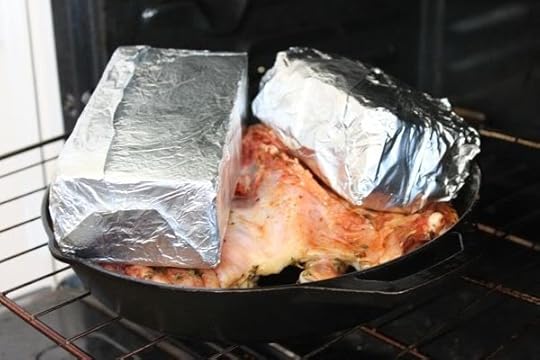
Cook until the skin is golden brown, 6-8 minutes (it’s okay to take the bricks off and peek).
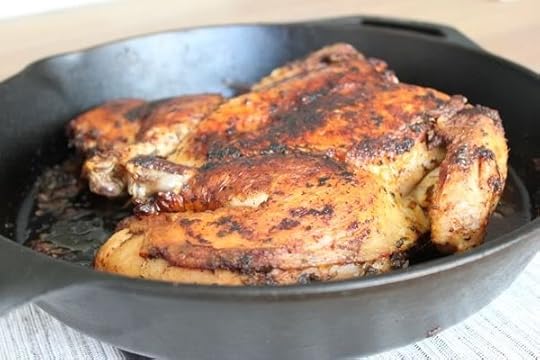
Put the skillet in the oven and roast the chicken with the bricks on top for 25 minutes. Take off the bricks and turn the chicken over. Put the bricks back on and roast another 10 or so minutes until the chicken is done. The juices should run clear when you pierce the bird with a fork; you can also stab it with a thermometer and make sure it reads at least 165 °F (74 °C).

Grab The Primal Blueprint Cookbook Today and Receive Free S&H and a Free Primal Blueprint Poster

August 17, 2012
Not Only Did I Break Past My Plateau, I Demolished It
It’s Friday, everyone! And that means another Primal Blueprint Real Life Story from a Mark’s Daily Apple reader. If you have your own success story and would like to share it with me and the Mark’s Daily Apple community please contact me here. I’ll continue to publish these each Friday as long as they keep coming in. Thank you for reading!
 I wanted to share my Primal success story with you, and give you a huge thanks for changing my life forever. Here goes…
I wanted to share my Primal success story with you, and give you a huge thanks for changing my life forever. Here goes…
When I was in high school I was way too skinny, but man did I have some energy. I could run a few miles playing games, ride my bike around the neighborhood up steep hills, roller blade for an hour, play a basketball game, and climb a tree or two before I’d call it a day. I was a machine. I weighed a nice 120 lbs soaking wet standing at 5′ 10″. The doctors always told my mom I was underweight.
During this time my nutrition was awful. I’d routinely eat Chips Ahoy! cookies for breakfast, tons of sugary cereals and snacks, and tons of soda. Despite this disaster of a diet I was extremely active and always skinny, so no one, including myself, was concerned about my nutrition. All was not entirely well though. I had some blood sugar issues. If I didn’t eat every few hours I’d crash hard and in a couple rare occurrences even passed out from the blood sugar drops. I was not diagnosed as anemic, just too skinny, so why not eat some more cookies?
I continued this way through college, but I eventually moved out on my own, got a job as a software engineer and got sedentary. This is when all hell broke loose. No longer did I do any form of exercise unless you count the twitching my fingers did over the keyboard. No longer did I have my parents cooking meals for me, so my diet got even worse. It was bagels and donuts for breakfast, McDonald’s for lunch, and some boxed stove-top meal for dinner. Over 2 years I steadily put on weight at the rate of about 2 lbs a month. I did not have any concerns over this because of how skinny I was. In fact, it was nice to not look so skinny anymore.
How I was not completely sick from my poor diet is still beyond me, but things started to happen that I didn’t like. I started getting pretty severe GERD. I’d wake up multiple times throughout the night and have to eat a bunch of anti-acids to try to get it to stop. A couple of times it got really bad and kept me up all night. Additionally, I was out of shape like never before. The day I decided I needed to make a change was when I realized my heart rate was through the roof from just squatting down to tie my shoe one morning. I weighed myself and found out that my once 120 lb self was now a whopping 187 lbs.
No big deal I thought. I’ll just exercise it all off like the old days. I’ll run and bike a lot and still eat the foods I love and lose weight like a mad man. Easy! I tried to jog a mile the next day, made it about 1/4 mile and had to walk the rest of the way. It took me three weeks to build back up to a full mile. I stayed pretty active for a couple of months which made me more hungry, so I ate more. I made no progress.
No big deal I thought. I just have to do more. I started doing the P90x program, which made me REALLY hungry…so I ate even more. I got stronger, saw some minor results but nothing major and eventually got fed up and decided maybe I should try this whole “diet” thing. I started eating oatmeal, egg whites, boneless skinless chicken breast, and broccoli. The diet was so bland that I lasted 1 week before I couldn’t take it. I tried all kinds of different low-fat foods after that and just really didn’t like any of it, I couldn’t stick with a diet to save my life.
While at a software development conference I overheard someone talking about Tim Ferris’ Four Hour Body. I decided to check it out and give it a try. I started eating a ton of chili and mexican food, with LOTS of beans. This was the first time I started to see some progress. I lost about 15 lbs. Eventually I stopped seeing progress and started to not feel that great. The “encouraged” binge days and large quantities of legumes left me feeling deprived during the week. I still had GERD issues and some digestion problems started to develop, probably from the beans.
A colleague of mine stumbled across The Primal Blueprint a couple months later and told me that I HAD to check it out. I picked it up on Amazon and read it from cover to cover in like a day, not because I wanted to lose weight that badly, but because the science behind this stuff got me geeked up (easily happens to a computer programmer). Without a ton of thought or effort I transitioned into it by dropping the beans and starting to eat steaks, bacon and eggs, and other stuff I was afraid to eat. I started liberally using grassfed butter all over my veggies. For the first time ever I was enjoying what I was eating. Not only did I break past my plateau, I demolished it. I started losing between 2-5 lbs a week effortlessly, and I was probably only complying with the protocol about 80-85%, sneaking some ice cream and dark chocolate in there from time to time. My GERD symptoms have completely disappeared, and so have my blood sugar issues. Also, I can fast for 24 hours effortlessly without any crashes.
I’ve been sticking with this lifestyle for about a year now and have ultimately landed at about 10% body fat, 145 lbs. I have tons of energy, I enjoy my food, I lift weights a couple times a week and go for walks during lunch at work. That is it, it’s that simple.
Thank you for all you do and for helping me achieve this. You and Robb Wolf are my idols. I’ve attached a before after photo of the weight loss.
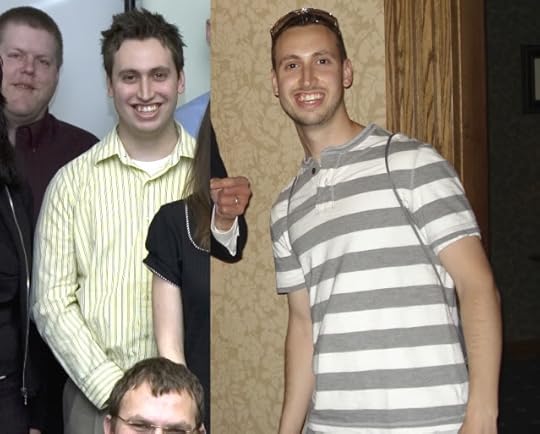
Lee
Grab The Primal Blueprint Cookbook Today and Receive Free S&H and a Free Primal Blueprint Poster

August 16, 2012
The Rich and Measurable Benefits of Spending More Time in Nature
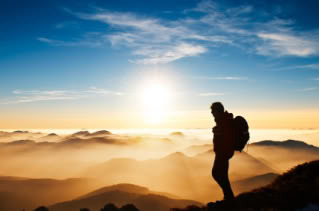 Anyone outside as they’re reading this? Who’s wishing they were? (I imagine there are many heads nodding.) It’s a natural human instinct, this pining away at the office window, this emotional itch to break out, and finally the luxuriant relief to be in the open again. The fact is, we’re never so much at home as we are in the outdoors. Nature was the context and logic for all of human evolution. Temporary shelters and caves aside, our nomadic hunter-gatherer ancestors lived their full lives under the big sky. They developed complex skills and even aesthetic preferences adaptive to surviving in the natural world. Increasingly, research illuminates the deep-reaching legacy of our natural roots. Studies support what Primal intuition has known all along: there are rich and measurable benefits to being in nature.
Anyone outside as they’re reading this? Who’s wishing they were? (I imagine there are many heads nodding.) It’s a natural human instinct, this pining away at the office window, this emotional itch to break out, and finally the luxuriant relief to be in the open again. The fact is, we’re never so much at home as we are in the outdoors. Nature was the context and logic for all of human evolution. Temporary shelters and caves aside, our nomadic hunter-gatherer ancestors lived their full lives under the big sky. They developed complex skills and even aesthetic preferences adaptive to surviving in the natural world. Increasingly, research illuminates the deep-reaching legacy of our natural roots. Studies support what Primal intuition has known all along: there are rich and measurable benefits to being in nature.
Think about all the times you’ve spent outdoors in your life. Beyond the mere comings and goings of the day, when have you been present in nature largely for its own sake? Some of us are hikers, some hunters. Some love to camp or sit on the beach. A few are tree climbers, a few mountain climbers. Some relish the chance to photograph the perfect sunset or the local wildlife. We’re alternately runners, walkers, kayakers, and playground enthusiasts. Many among us head outdoors for adventure while others prefer to lose themselves in the quiet observation of a river’s flow. We follow different purposes but ultimately feed a common instinct.
We know how we feel in these encounters. We’re calm, exhilarated, fortified, restored, still. The effects are more than emotional, however, and the significance more than personal. Modern medicine is beginning to catch on to the use of nature in healing and maintaining health. It’s part of growing attention to therapeutic lifestyle practices, basic activities that demonstrate health related benefits. In fact, there’s a movement taking root across the globe – from Norway to Japan, from New Mexico to North Carolina – to prescribe nature. Though the details and incentive vary considerably, physicians are partnering with national, state, or local park organizations to encourage their patients to use the opportunity for exercise and immersion in nature to better their health.
It’s with good reason. On the physical side, time in nature is associated with a welcome decrease in blood pressure, heart rate, and sympathetic nerve activity. There’s the dramatic increase of anti-cancer protein expression and natural killer cells to fight off infection and cancer growth. To boot, exercising outdoors in green – or better yet green and “blue” (body of water) – space enhances the gains of each workout. Subjects in studies report greater revitalization, increased energy, and more positive engagement, along with less depression, anger, confusion, and tension when they exercised outdoors in comparison with indoor workouts.
Then there are the other mental benefits, including the overall reduction in stress as well as cognitive advantages such as the replenishing of voluntary attention that enhance connectivity in the brain and allows us to focus efficiently. And don’t forget the opportunity to experience deep joy and transcendental connectedness. It’s a shame we can’t all be outside right now.
Moreover, it appears from the totality of research that time in nature most powerfully nurtures us when we’re most “at risk” – of disease, depression, or desperation. Studies have illuminated measurable physiological progress (e.g. fewer surgical related complications, decreased use of pain medication, and shorter hospital stays) and greater emotional well-being when patients frequent hospital gardens like the amazing Prouty Garden of Children’s Hospital in Boston (which may be eliminated to make space for other clinical facilities) or simply have a “green” view in their rooms (PDF). Time in open natural space drastically reduces the symptoms of ADHD and behavioral disorders in children. Wilderness therapy has been instrumental in abuse and addiction recovery models (PDF). Immersion in nature can offer an emotional release for many, while the challenge of outdoor adventures can act as a turning point in regaining trust and self-esteem.
Nature therapies, especially surf therapy, are now supported by a number of military related nonprofits to help many returning soldiers transition to civilian life and to cope with trauma and disability resulting from their combat experiences. As the foundation director of one ocean therapy organization explains, “Surfing [can be] a catalyst, where after injury, the Marine may feel damaged or unable to complete his mission. After surfing and gaining that renewed confidence, some of the participants show a renewed vision towards the future and begin to set goals and engage with their families again.”
The truth is, many of us can benefit from the open, elemental space nature offers to re-envision ourselves, our lives, and our relationships. Outside the roles and routines of daily life, we can encounter what’s most essential in our selves and others. We can let go of everything but a momentary, wild awareness. In doing so, we can release the pain or heaviness we’ve been carrying. We can unblock the channels for feeling and relating. Unbound by physical and emotional distraction, we can be more present for our children, partners, and other loved ones (PDF).
There’s both physical and emotional power in returning to what is most essential in ourselves. In nature, we find congruence – the biological and psychic synchronicity that directed our evolution. We’re nurtured within this ancient set point, the origin for a potent path to healing and vitality.
Thanks for reading today, everyone. Let me know your thoughts about how nature has influenced your well-being. Have a great end to the week, and get outside!
Get the Primal Blueprint Fitness eBook, Free Health Tips and Primal Recipes Delivered to Your Inbox

The Rich and Measurable Benefits to Spending More Time in Nature
 Anyone outside as they’re reading this? Who’s wishing they were? (I imagine there are many heads nodding.) It’s a natural human instinct, this pining away at the office window, this emotional itch to break out, and finally the luxuriant relief to be in the open again. The fact is, we’re never so much at home as we are in the outdoors. Nature was the context and logic for all of human evolution. Temporary shelters and caves aside, our nomadic hunter-gatherer ancestors lived their full lives under the big sky. They developed complex skills and even aesthetic preferences adaptive to surviving in the natural world. Increasingly, research illuminates the deep-reaching legacy of our natural roots. Studies support what Primal intuition has known all along: there are rich and measurable benefits to being in nature.
Anyone outside as they’re reading this? Who’s wishing they were? (I imagine there are many heads nodding.) It’s a natural human instinct, this pining away at the office window, this emotional itch to break out, and finally the luxuriant relief to be in the open again. The fact is, we’re never so much at home as we are in the outdoors. Nature was the context and logic for all of human evolution. Temporary shelters and caves aside, our nomadic hunter-gatherer ancestors lived their full lives under the big sky. They developed complex skills and even aesthetic preferences adaptive to surviving in the natural world. Increasingly, research illuminates the deep-reaching legacy of our natural roots. Studies support what Primal intuition has known all along: there are rich and measurable benefits to being in nature.
Think about all the times you’ve spent outdoors in your life. Beyond the mere comings and goings of the day, when have you been present in nature largely for its own sake? Some of us are hikers, some hunters. Some love to camp or sit on the beach. A few are tree climbers, a few mountain climbers. Some relish the chance to photograph the perfect sunset or the local wildlife. We’re alternately runners, walkers, kayakers, and playground enthusiasts. Many among us head outdoors for adventure while others prefer to lose themselves in the quiet observation of a river’s flow. We follow different purposes but ultimately feed a common instinct.
We know how we feel in these encounters. We’re calm, exhilarated, fortified, restored, still. The effects are more than emotional, however, and the significance more than personal. Modern medicine is beginning to catch on to the use of nature in healing and maintaining health. It’s part of growing attention to therapeutic lifestyle practices, basic activities that demonstrate health related benefits. In fact, there’s a movement taking root across the globe – from Norway to Japan, from New Mexico to North Carolina – to prescribe nature. Though the details and incentive vary considerably, physicians are partnering with national, state, or local park organizations to encourage their patients to use the opportunity for exercise and immersion in nature to better their health.
It’s with good reason. On the physical side, time in nature is associated with a welcome decrease in blood pressure, heart rate, and sympathetic nerve activity. There’s the dramatic increase of anti-cancer protein expression and natural killer cells to fight off infection and cancer growth. To boot, exercising outdoors in green – or better yet green and “blue” (body of water) – space enhances the gains of each workout. Subjects in studies report greater revitalization, increased energy, and more positive engagement, along with less depression, anger, confusion, and tension when they exercised outdoors in comparison with indoor workouts.
Then there are the other mental benefits, including the overall reduction in stress as well as cognitive advantages such as the replenishing of voluntary attention that enhance connectivity in the brain and allows us to focus efficiently. And don’t forget the opportunity to experience deep joy and transcendental connectedness. It’s a shame we can’t all be outside right now.
Moreover, it appears from the totality of research that time in nature most powerfully nurtures us when we’re most “at risk” – of disease, depression, or desperation. Studies have illuminated measurable physiological progress (e.g. fewer surgical related complications, decreased use of pain medication, and shorter hospital stays) and greater emotional well-being when patients frequent hospital gardens like the amazing Prouty Garden of Children’s Hospital in Boston (which may be eliminated to make space for other clinical facilities) or simply have a “green” view in their rooms (PDF). Time in open natural space drastically reduces the symptoms of ADHD and behavioral disorders in children. Wilderness therapy has been instrumental in abuse and addiction recovery models (PDF). Immersion in nature can offer an emotional release for many, while the challenge of outdoor adventures can act as a turning point in regaining trust and self-esteem.
Nature therapies, especially surf therapy, are now supported by a number of military related nonprofits to help many returning soldiers transition to civilian life and to cope with trauma and disability resulting from their combat experiences. As the foundation director of one ocean therapy organization explains, “Surfing [can be] a catalyst, where after injury, the Marine may feel damaged or unable to complete his mission. After surfing and gaining that renewed confidence, some of the participants show a renewed vision towards the future and begin to set goals and engage with their families again.”
The truth is, many of us can benefit from the open, elemental space nature offers to re-envision ourselves, our lives, and our relationships. Outside the roles and routines of daily life, we can encounter what’s most essential in our selves and others. We can let go of everything but a momentary, wild awareness. In doing so, we can release the pain or heaviness we’ve been carrying. We can unblock the channels for feeling and relating. Unbound by physical and emotional distraction, we can be more present for our children, partners, and other loved ones (PDF).
There’s both physical and emotional power in returning to what is most essential in ourselves. In nature, we find congruence – the biological and psychic synchronicity that directed our evolution. We’re nurtured within this ancient set point, the origin for a potent path to healing and vitality.
Thanks for reading today, everyone. Let me know your thoughts about how nature has influenced your well-being. Have a great end to the week, and get outside!
Get the Primal Blueprint Fitness eBook, Free Health Tips and Primal Recipes Delivered to Your Inbox

Mark Sisson's Blog
- Mark Sisson's profile
- 199 followers





